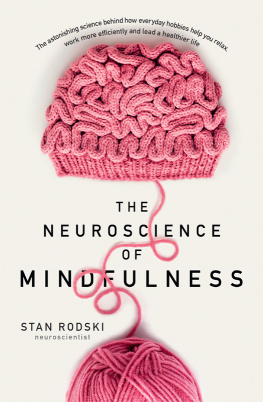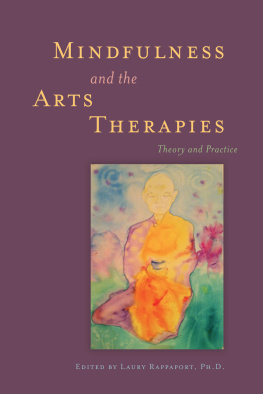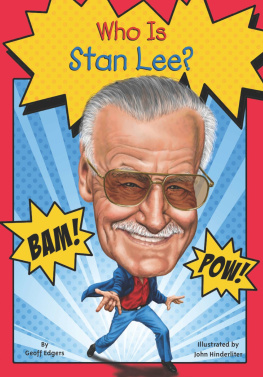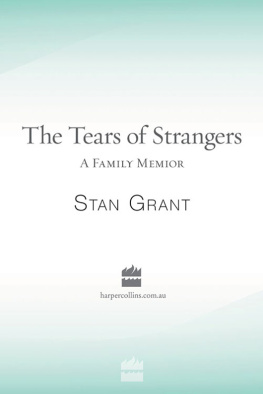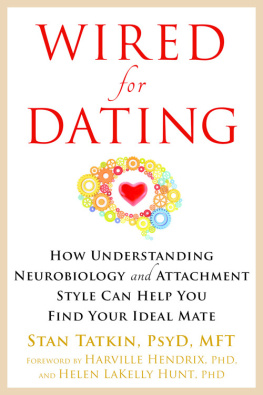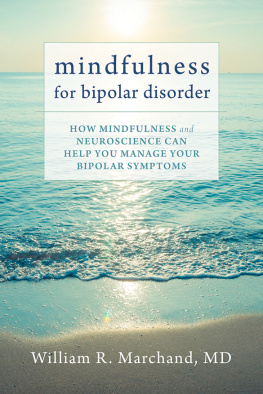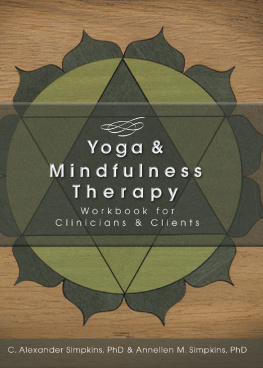Dr Stan Rodski - The Neuroscience of Mindfulness
Here you can read online Dr Stan Rodski - The Neuroscience of Mindfulness full text of the book (entire story) in english for free. Download pdf and epub, get meaning, cover and reviews about this ebook. year: 2018, publisher: HarperCollins, genre: Religion. Description of the work, (preface) as well as reviews are available. Best literature library LitArk.com created for fans of good reading and offers a wide selection of genres:
Romance novel
Science fiction
Adventure
Detective
Science
History
Home and family
Prose
Art
Politics
Computer
Non-fiction
Religion
Business
Children
Humor
Choose a favorite category and find really read worthwhile books. Enjoy immersion in the world of imagination, feel the emotions of the characters or learn something new for yourself, make an fascinating discovery.
- Book:The Neuroscience of Mindfulness
- Author:
- Publisher:HarperCollins
- Genre:
- Year:2018
- Rating:5 / 5
- Favourites:Add to favourites
- Your mark:
- 100
- 1
- 2
- 3
- 4
- 5
The Neuroscience of Mindfulness: summary, description and annotation
We offer to read an annotation, description, summary or preface (depends on what the author of the book "The Neuroscience of Mindfulness" wrote himself). If you haven't found the necessary information about the book — write in the comments, we will try to find it.
The Neuroscience of Mindfulness — read online for free the complete book (whole text) full work
Below is the text of the book, divided by pages. System saving the place of the last page read, allows you to conveniently read the book "The Neuroscience of Mindfulness" online for free, without having to search again every time where you left off. Put a bookmark, and you can go to the page where you finished reading at any time.
Font size:
Interval:
Bookmark:
CONTENTS
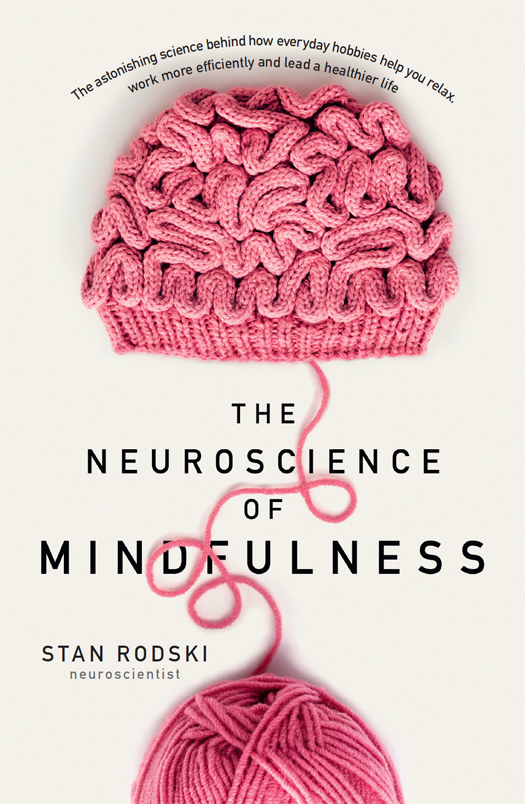
STAN RODSKI is a highly respected scientist and an authority on how to improve mental performance in high-stress situations by adopting brain energy management techniques. A cognitive neuroscientist, he practised as a registered psychologist for over thirty years but now focuses on research, lecturing and writing. His current role as Chief Neuroscientist for The Think Group has led to him working across Australia and internationally to develop innovative technologies and programs for individuals (brain coaching), peak-performance sport and eSport teams, and many top-500 companies looking for creative, brain-focused initiatives to facilitate corporate success. Most recently, he has been applying his research in the brain sciences to issues such as reducing sleep deprivation and brain fatigue and congestion, and managing and boosting energy to harness stress.
Stan introduced the brain-science-based Colourtation method to stress management and his work using colouring-in techniques led to his bestselling books, Anti-stress, Brain-science and Modern Medi-tation, which were featured in Oprah Winfreys 2016 Christmas Wish List.
Stans other specialist area of research is the neuroscience of machine learning or AI (artificial intelligence) particularly using neurologically based predictive algorithms (computational neuroscience) in areas such as diversity and recruitment. Most recently, he has developed innovative brain-edge scans and neuro-POD technologies, which seek to revolutionise human performance in personal, learning and workplace environments.
Stan is married with four children and three grandchildren and lives in Melbourne, Australia.
HarperCollinsPublishers
First published in Australia in 2019
by HarperCollinsPublishers Australia Pty Limited
ABN 36 009 913 517
harpercollins.com.au
Copyright Mind Peak Performance Pty Ltd 2019
The right of Stan Rodski to be identified as the author of this work has been asserted by him in accordance with the Copyright Amendment (Moral Rights) Act 2000.
This work is copyright. Apart from any use as permitted under the Copyright Act 1968, no part may be reproduced, copied, scanned, stored in a retrieval system, recorded, or transmitted, in any form or by any means, without the prior written permission of the publisher.
HarperCollinsPublishers
Level 13, 201 Elizabeth Street, Sydney, NSW 2000, Australia
Unit D1, 63 Apollo Drive, Rosedale 0632, Auckland, New Zealand
A 75, Sector 57, Noida, Uttar Pradesh 201 301, India
1 London Bridge Street, London SE1 9GF, United Kingdom
Bay Adelaide Centre, East Tower, 22 Adelaide Street West, 41st Floor, Toronto, Ontario, M5H 4E3, Canada
195 Broadway, New York, NY 10007, USA
ISBN: 978 1 4607 5381 1 (paperback)
ISBN: 978 1 4607 0831 6 (ebook)
A catalogue record for this book is available from the National Library of Australia.
Cover design by Darren Holt, HarperCollins Design Studio
Cover image: Ball of yarn by shutterstock.com
Photograph and the repeated head icon and wool thread images by Shutterstock; all other photographs by Stan Rodski
To Julie, for forty years of love and understanding
In the course of my career I worked as a registered psychologist for over thirty years, mainly with executives and people dealing with high stress. During those years I became increasingly interested in the potential of the simple act of colouring in to help us rewire our brains. This would eventually lead me to develop my series of Colourtation books.
Tahlia came to my offices one day as a very stressed and anxious sixteen-year-old. She had severe agoraphobia fear of open spaces and found it immensely difficult even to go outside. Shed been suffering from the condition since she was about thirteen or fourteen, and it had worsened to the point where shed been unable to attend school for the last two years. Her personal, social and family life was in tatters.
She had been medicated for her condition, but the more drugs she tried, the worse it got. Every time a health professional suggested something new, she only had to think about what she was being asked to do, and her fear would totally disable her. I might have been the seventeenth professional shed seen in three years.
Her distraught parents had tried everything. This time they didnt want just another psychological intervention, but theyd heard about the work Id been doing on rewiring the brain.
When they approached me, I said, Well, yes, I will take her on, and I want to trial a new technique that Ive been working on. And I asked, Does she like colouring in? and they told me that she did. I said, Look, tell her to bring her favourite pencils with her, and Ill explain what she has to do.
When I met Tahlia she told me that, like most of us, shed really enjoyed colouring in as a very young child. In fact, she told me quietly that she still enjoyed it today.
I said, Id like you to help me with an experiment. (The word experiment took some of the pressure off: whether it worked or didnt work was no big deal.)
And I said, Im going to use an EEG electroencephalography machine. So were going to hook up your earlobe, and were going to look at the way your brain is communicating with your body, in particular the way its communicating with a couple of your glands and organs that are producing this state of anxiety in you.
What we were measuring were two neurotransmitters (chemical messengers). One was the activation neurotransmitter, adrenaline, and the other was the relaxation neurotransmitter, dopamine.
First I just put her on the machine for five minutes while she sat there looking blankly at me, so I had a baseline from which to measure any improvement.
Then I said, OK, here we go. Heres a book of pictures. Now, theyre not pictures of anything in particular, I know, theyre just designs. And I gave her some of the drawings Id prepared for my Colourtation colouring books.
Pick one, I told her. Dont worry about me. Get your colouring pencils out, and you just colour. Ill tell you when to stop; itll be after about five minutes. And well see what happens.
While she coloured in, I encouraged her to practise mindfulness: Just forget about everything else and concentrate only on your colouring. At the end of those five minutes, I told her to stop. I asked, So, do you feel a little more relaxed?
She said, I do. I cant believe it.
What really surprised her was looking at the EEG results before and after. The improvement was dramatic. She had relaxed, physically and mentally, and she could see it on the computer monitor. She felt better, and the computer reinforced and validated her feelings.
I didnt tell her which colours to use, but the colours she chose were dark blacks, blues, purples and reds. This reflected her mental state; she felt under a lot of pressure, anxious about being depressed, and depressed about being anxious.
At our next meeting, Tahlia decided to use light and dark blue. Her EEG result further improved, as did her confidence in her ability to control her anxiety. By our third meeting, her colours were definitely brightening up, with the use of dark and light greens. She was starting to see that she could control the parts of her brain that affected her feelings and mood, and this realisation was reinforced by the technology that was monitoring her.
She had started the journey towards rewiring her brain.
Font size:
Interval:
Bookmark:
Similar books «The Neuroscience of Mindfulness»
Look at similar books to The Neuroscience of Mindfulness. We have selected literature similar in name and meaning in the hope of providing readers with more options to find new, interesting, not yet read works.
Discussion, reviews of the book The Neuroscience of Mindfulness and just readers' own opinions. Leave your comments, write what you think about the work, its meaning or the main characters. Specify what exactly you liked and what you didn't like, and why you think so.

